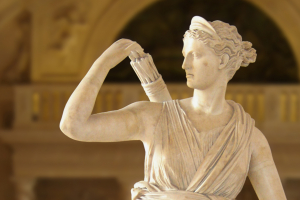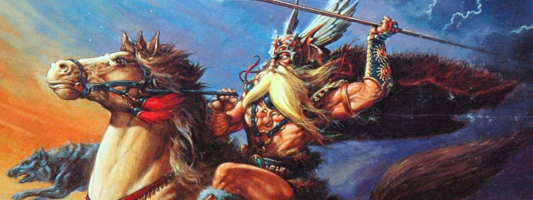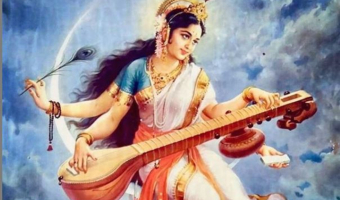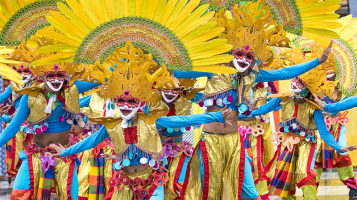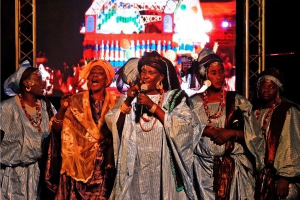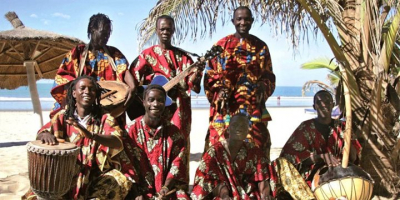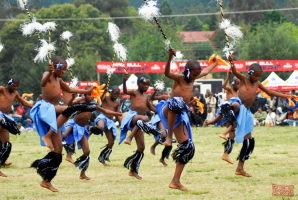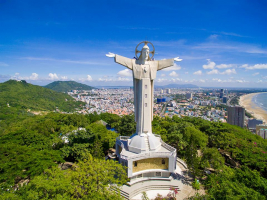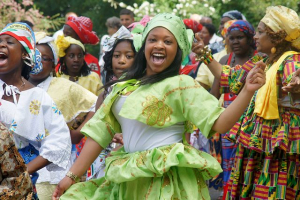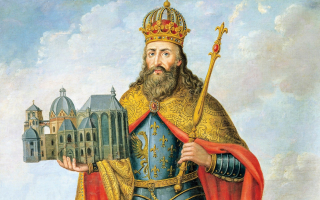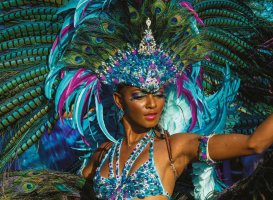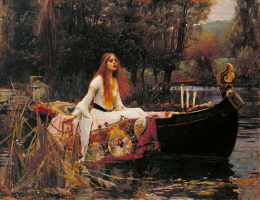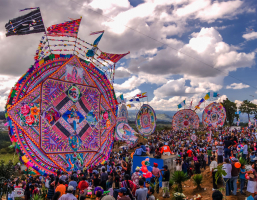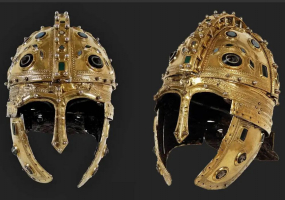Top 10 Most Famous Norse Goddesses
Norse people had a specific set of ideas that aided in their understanding of both themselves and the environment around them, including the causes for flower ... read more...growth and the motion of the stars at night. The most well-liked deity in Viking times was Thor. However, there were numerous Norse goddesses whose legends the Vikings would have shared and who they would have loved dearly. Let's explore the most famous Norse goddesses with Toplist!
-
Freyja is definitely one of the most famous Norse goddesses. Freyja is a goddess of love, fertility, sex, war, gold, and seir in Norse paganism (magic for seeing and influencing the future). Freyja has a cloak made of falcon feathers, rides a chariot drawn by two cats, is escorted by the boar Hildisvni, and owns the necklace Brsingamen. She is the mother of two girls, Hnoss and Gersemi, by her husband R. She is a Vanir, like her twin brother Freyr, father Njörr, mother, and father. Modern spellings of the name that are derived from the Old Norse Freyja include Freya, Freyia, and Freja. Half of those who lose their lives in combat are given to Freyja in her celestial field, Fólkvangr, under her authority. The other half enter Valhalla, the hall of the deity Odin. She is located in Sessrúmnir, a hall in Folkvangr. Freyja is a fertility and love goddess who lends her feathered robe to other gods for their benefit. She is also regularly sought after by powerful jötnar who want to wed her.
In Swedish literature, for instance, Freyja was portrayed as a Scandinavian version of the Roman Venus in the contemporary era. The goddess may be connected to romantic love or, on the other hand, be equated with "desire and potency.” In his Fredman's Epistles from the 18th century, Swedish poet Carl Michael Bellman referred to Stockholm prostitutes as "the offspring of Fröja." Britt-Mari Näsström notes that Swedish Romanticism in the 19th century placed more emphasis on the idea of "the pining goddess, sobbing for her husband" than it did on Freyja's sensual attributes. Today, Freyja is mostly revered as a goddess of fertility, abundance, and beauty by many Asatru practitioners. Baking items with a connection to love in some form, such as chocolate, is a typical ritual for modern Freya worshippers. Freyja is also requested to provide security, typically in cases of domestic violence.
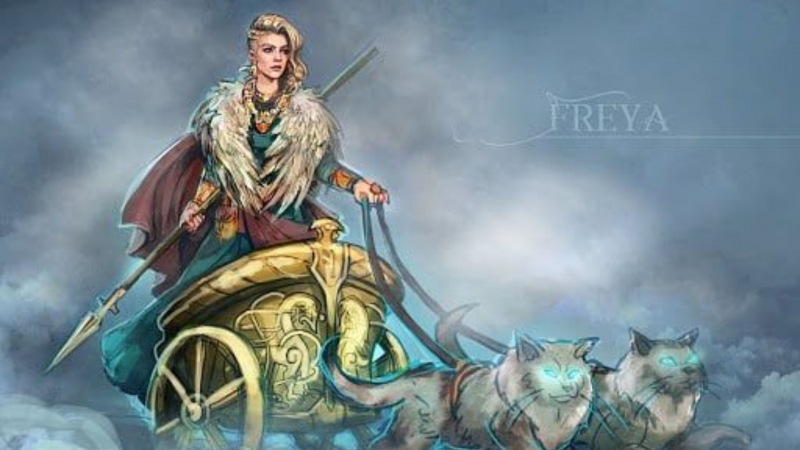
Photo: Viking Style 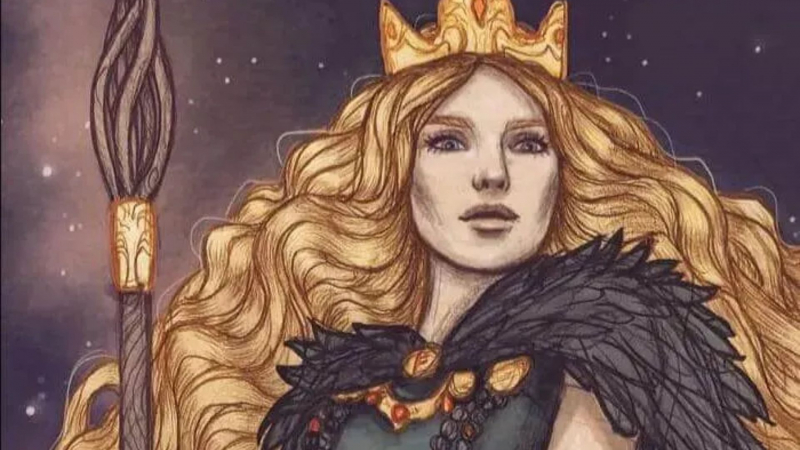
Photo: Pirate Jewery -
Frigg is a goddess and one of the sir, the main gods of Norse religion, according to Germanic mythology. She is connected to motherhood, marriage, prophecy, and clairvoyance in Norse mythology, which contains the majority of the information still in existence about her. She resides in the Fensalir marsh halls. She is known as Frja in Old High German, Fra in Langobardic, Frg in Old English, Fra in Old Frisian, and Fr in Old Saxon mythology. These names all derive from the Proto-Germanic theonym *Frijj, which means "(the) Beloved" or "(the) Free." She is almost universally portrayed as Odin's wife.
She is expressly linked to Fulla in Old High German and Old Norse sources, but she is also ambiguously linked to the Earth, which is elsewhere personified as an apparently independent entity called Jör (Old Norse: "Earth"). The shining god Baldr is one of Frigg and Odin's offspring. Scholars have suggested a link to the goddess Freyja due to a considerable thematic match. Her name is borne by the English word Friday, which ultimately means "Frigg's Day." Frigg was still mentioned in Scandinavian folklore after Christianity spread there. Frigg has gained popularity in modern society, been the subject of artwork, and is revered in Germanic Neopaganism.
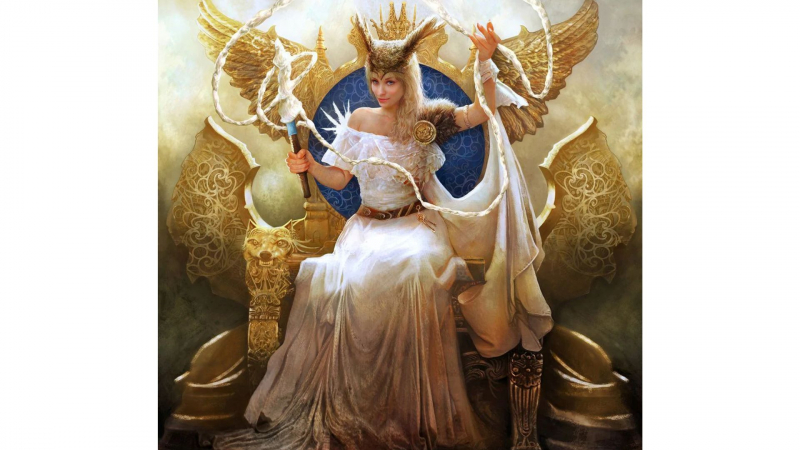
Photo: VikingsBrand 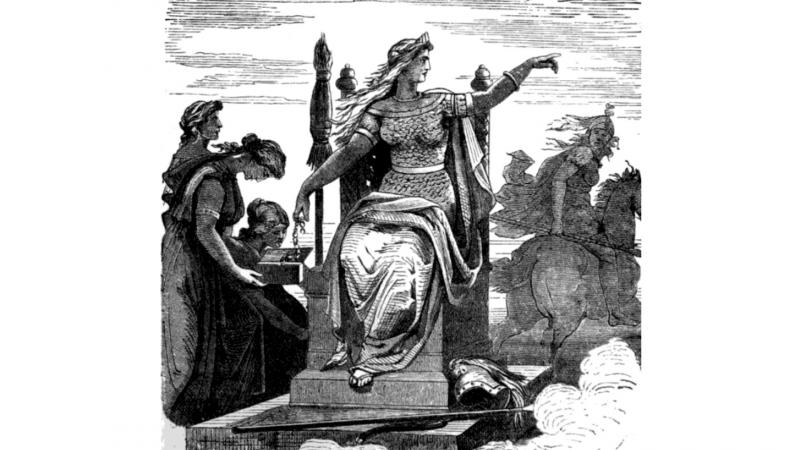
Photo: Ancient Origins -
Gefjon is a goddess in Norse mythology who is linked to plowing, the Danish island of Zealand, the fabled Swedish king Gylfi, the fabled Danish king Skjöldr, foreknowledge, her oxen children, and virginity. Gefjon appears as a gloss for various Greco-Roman goddesses in some Old Norse translations of Latin works. She is attested in the Poetic Edda, which was assembled in the 13th century from earlier traditional sources, the Prose Edda, and Heimskringla, both written in the same century by Snorri Sturluson. She is regarded as one of the most famous Norse goddesses.
Both The Prose Edda and Heimskringla claim that Gefjon cleared the area that is now Sweden's Lake Mälaren in order to create Zealand, a Danish island. In addition, the Prose Edda claims that everyone who dies a virgin becomes Gefjon's attendants in addition to the fact that Gefjon is a virgin herself. Gefjon married the fabled Danish king Skjöldr, and the two lived in Lejre, Denmark, according to Heimskringla.
In one of the stories about Gefjon, she disguised herself as a lady beggar. She had then requested some land from Sweden's king, Gylfi, while she remained concealed. She could have as much land as she could plow in one day and one night, the monarch had promised. Then Gefjon tied her four large and powerful oxen boys to a plow. She made the decision to sow in the flat and rich western region of Sweden. Her plow dug down far into the earth and removed a sizable portion of Sweden. She had built a large new island by doing this. Today, this island is known as Zealand "Sjaelland" and is a part of Denmark.
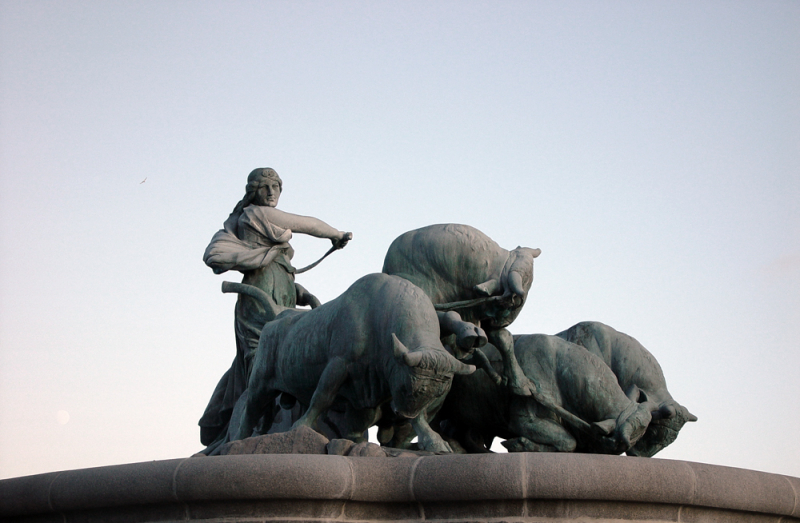
Photo: Wikipedia 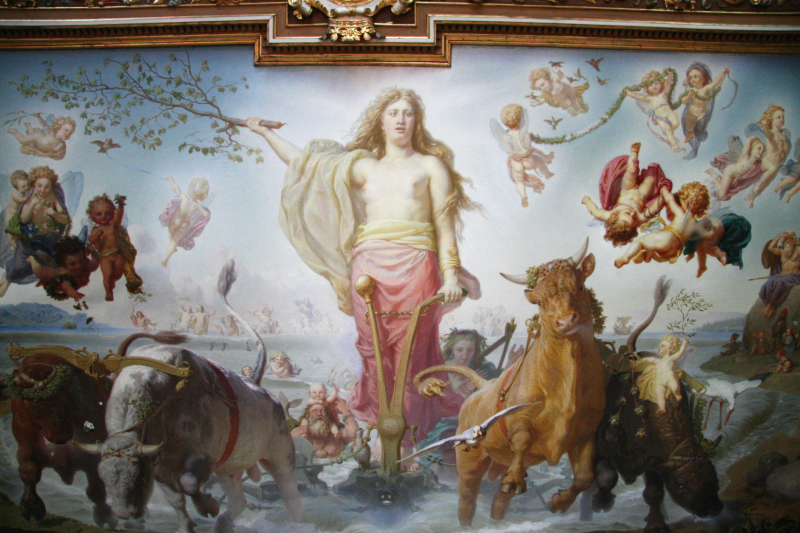
Photo: Norse Mytholofgy for Smart People -
Sif is a goddess of the ground in Norse mythology with golden hair. Sif appears in the Prose Edda, which Snorri Sturluson wrote in the 13th century, the Poetic Edda, which was assembled in the 13th century from older traditional sources, and in the poetry of skalds. She is wedded to the thunder god Thor and is renowned for having golden hair in both the Poetic Edda and the Prose Edda.
Sif was frequently mentioned in Norse sagas since she was the wife of Thor, one of the Aesir's most notable characters. She is frequently mentioned briefly, hence not much is truly known about this Goddess. Although it is clear that Thor was not Ullr's father, she was supposedly his mother, which gives insight into her personality and suggests she shared some of the same promiscuous inclinations as the aforementioned Frigg.
According to the Prose Edda, Loki once shaved Sif's hair, and when Thor ordered Loki to make a golden headdress for Sif, Loki produced not only Sif's golden hair, but also five other items for other gods. The Prose Edda also refers to Sif as being Thor's and Ullr's mother. According to theories put out by academics, Sif's hair may symbolize fields of golden wheat, she may be linked to rowan, fertility, family, and/or wedlock, and there may be a reference to her role or even her name in the Old English poem Beowulf.
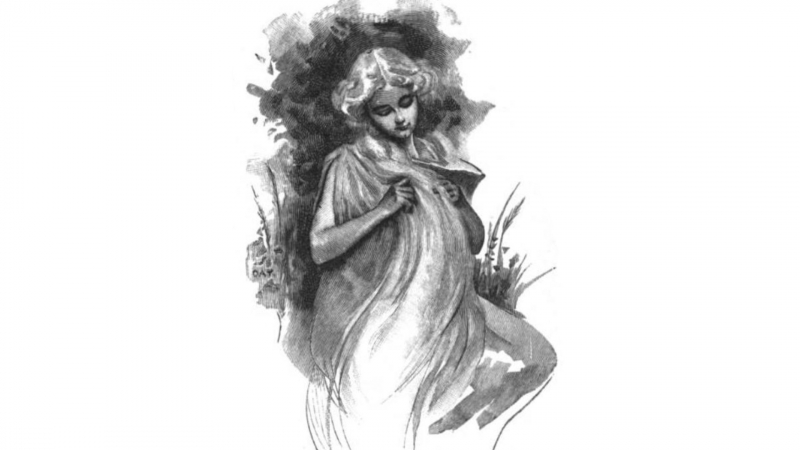
Photo: Wikipedia 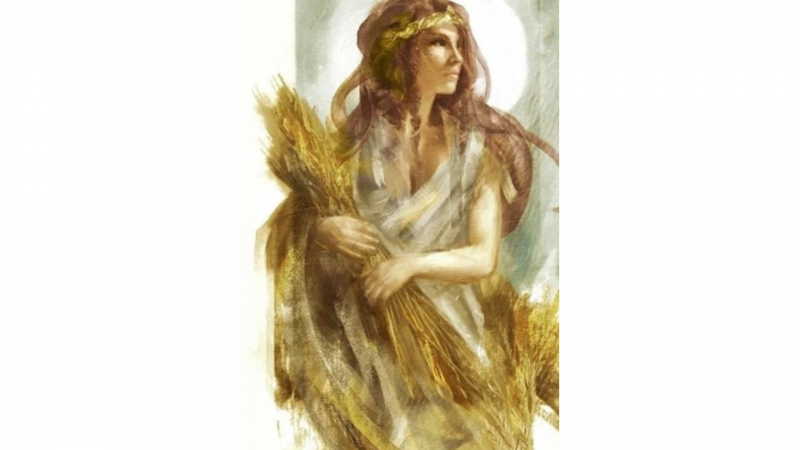
Photo: The Demonic Paradise Wiki -
Jörð is a goddess and the personification of earth in Norse mythology as well as one of the most famous Norse goddesses. She is a sexual lover of Odin and the mother of the thunder deity Thor. Jörð is mentioned in the Danish historian Gesta Danorum, which was written in the 12th century by Saxo Grammaticus, the Poetic Edda, which was written in the 13th century by an unidentified person or people, and the Prose Edda, which was also written in the 13th century. Her name is frequently used as a poetic metaphor for land or earth in skaldic poetry and kennings. He had no significant role in the stories and is simply mentioned in passing as the mother of Thor and the offspring of Nótt ("Night") and Anarr ("Another").
Old Norse jr is a noun that signifies "earth, land," and it also serves as a theonymic embodiment of the noun, "Earth-goddess." As shown by the Gothic aira, Old English eor, Old Saxon ertha, or Old High German erda, it derives from Proto-Germanic *erþō- ('earth, soil, land'). Possible connections include the term éra from ancient Greek, which means "earth." The term most likely derives from the Proto-Germanic root *erwa or erwōn-, which means "sand" or "dirt." Scholars believe that Fjörgyn is another name for Jör. Her name is also employed in skaldic poetry as a poetic metaphor for "land" or "the earth," and she is similarly identified as Thor's mother. The term Hlóðyn, which is used to refer to Thor in Völuspá as "son of Hlódyn," is probably also used to refer to Jörð. Although its origins are still unknown, Hlóðyn is frequently believed to be tied to the Romano-Germanic goddess Hludana, in whose honor Romano-Germanic votive tablets have been discovered on the Lower Rhine.
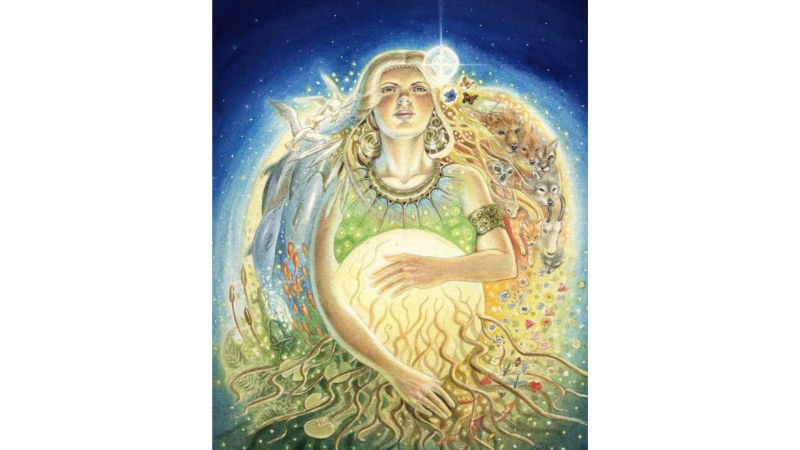
Photo: Berloga Workshop 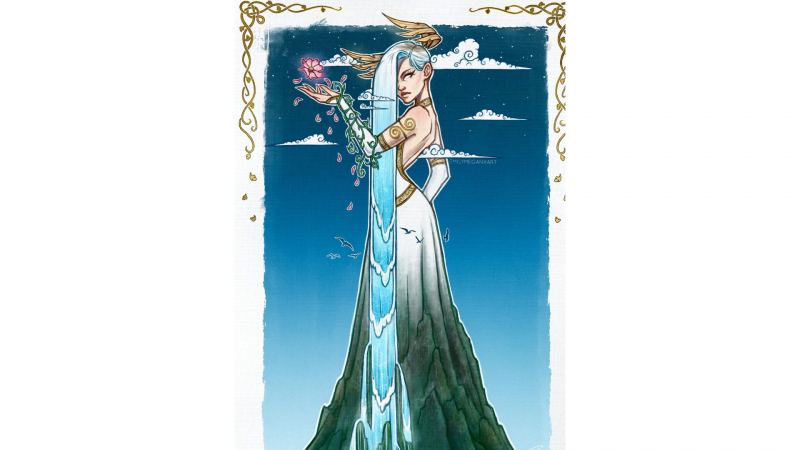
Photo: ArtStation -
Another Aesir goddess named Sigyn was the mischievous trickster Loki's wife. Despite Loki having other children outside of their marriage, they only had one son together, Nafri. The name "Sigyn" is believed to be derived from the Old Norse terms "sigr" and "vina," which translate to "victory" and "friend," respectively. This gives us the current English meaning of something like "victory's friend."
She is mentioned in the Prose Edda, which Snorri Sturluson wrote in the 13th century, as well as the Poetic Edda, which was assembled in the 13th century from older traditional sources. Little is said about Sigyn in the Poetic Edda other than how she helped her husband Loki when he was imprisoned. She occurs in several kennings, her assistance in assisting Loki through his time in bondage is emphasized, and she is twice referred to as a goddess in the Prose Edda. Sigyn might be shown on the Gosforth Cross and has been the focus of numerous theories and cultural allusions.
As part of their punishment for Loki, they transform Baldur's son Vali into a gigantic wolf, who tears out Nafri's entrails in the story that describes Baldur's demise. The other gods use them to ensnare Loki when they instantly harden and transform into an iron chain. The final act of punishment involves dropping poison from a snake held above him onto the victim's head. As she sits with Loki and holds a bowl above his head to catch the poison, Sigyn demonstrates in this story how faithful and devoted a wife she is. Even though she tried to stay as long as she could, she occasionally had to leave to empty the bowl, and the drips would hit Loki in the head, making him writhe in pain and setting off tremors throughout Midgard.
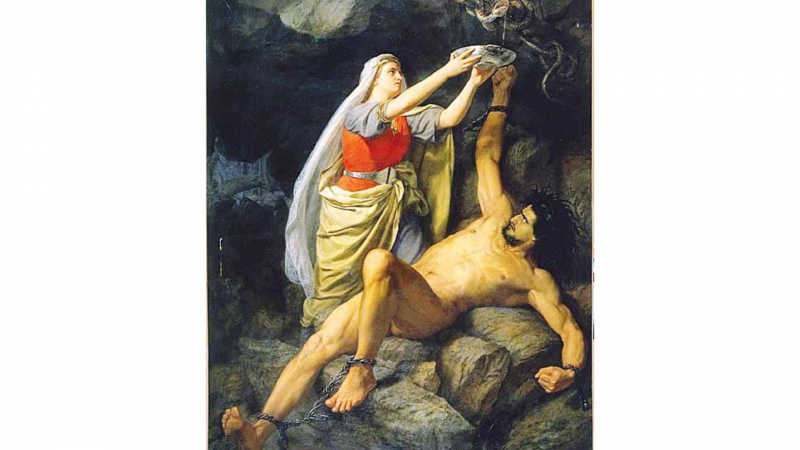
Photo: Wikipedia 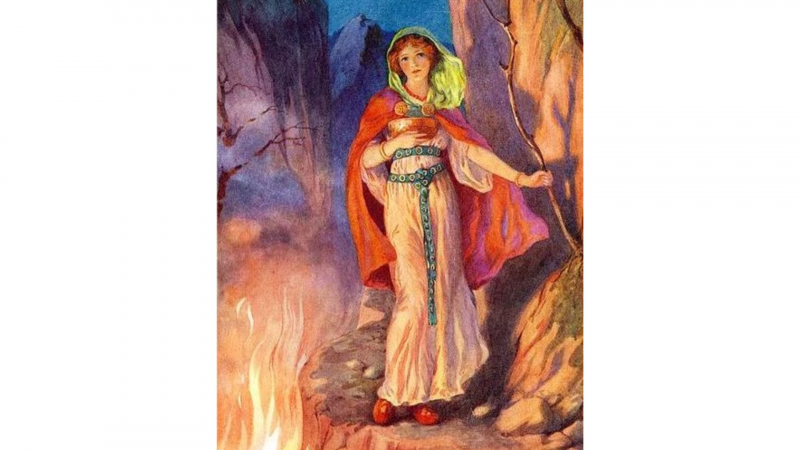
Photo: Myths and Folkfole Wiki -
Idun is the next name in the list of the most famous Norse goddesses. Idun was the goddess of spring and youth in Norse mythology. She was married to Bragi, the god of poetry and music, and the daughter of a dwarf named Ivald. Other gods and goddesses also flocked to her for assistance in becoming immortal because she was claimed to possess the apples of youth, which kept her youthful and beautiful forever.
The Norse sagas' "the kidnapping of Idun" has one of the most frequent references to Iðunn. In the events of this story, Loki was compelled to strike a deal with the enormous Thjazi, who had assumed the form of an eagle, in order to kidnap Idun and her apples and carry them to Jotunheim. Loki reluctantly agrees, tricking her into going with him by saying that there were more potent magical fruits there and that she should bring her own for comparison. The Aesir gods grew wrinkled and weak without her, feeling their youth slipping away. They threaten to kill him if he doesn't bring her back after learning that she was last seen with Loki. Loki was then given Freya's hawk feathers, enabling him to change into a hawk and fly to Jotunheim to save Idun. Fortunately for him, the giant had left his captive alone while he went fishing. Loki saw this as an opportunity to seize her and flee. The giant was furious when he came back and changed back into an eagle to pursue him. The other gods created a massive wall of kindling around the stronghold and lit it as soon as Loki entered as they were drawing closer to Asgard and the behemoth was quickly approaching Loki. The giant died after flying directly into the blazing flames because he was unable to slow down in time.
Iðunn 's origins in Proto-Indo-European religion and her connections to fertility are only two of the many theories surrounding her. Iunn has long been the subject of artwork and occasionally appears in contemporary popular culture.
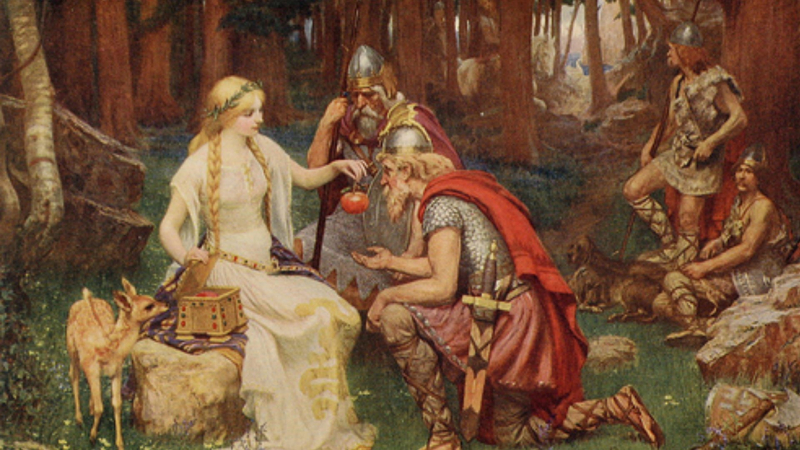
Photo: Norse Mythology for Smart People 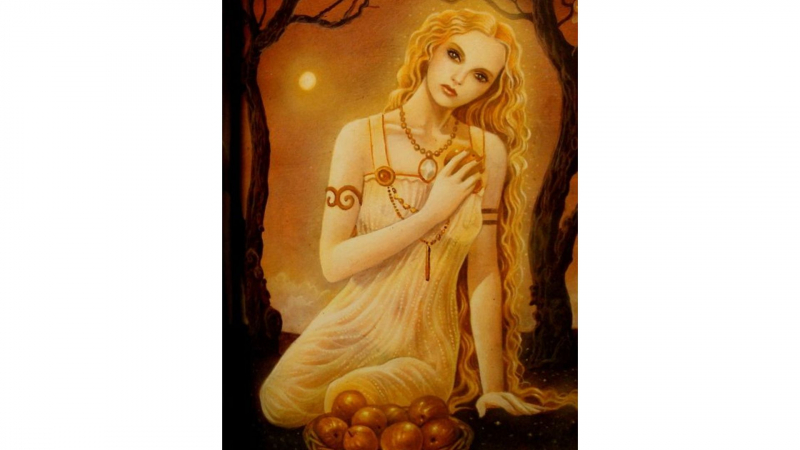
Photo: Pinterest -
The goddess Nerthus is linked to a ritual wagon procession. Before the Viking Age began in the first century AD, a Roman historian wrote the earliest description of her, mentioning her in his history of Germania. Modern academics believe that this writing shows she was on the Danish island of Zealand at the time.
Due to the narrative of her traveling on a wagon, which was a custom among the Vanir gods, it is assumed that she is a member of the Vanir. Various ceremonial carts have been discovered during archaeological digs in Scandinavia, especially at the Osperg Ship site. Every year, it was thought, the Vanir deity Freyr rode a wagon across the countryside with a priestess who would bless the fields and assure a successful harvest. There are many parallels between Nerthus and Njord, and it is believed that the word Nerthus is simply a Latinized form of Njord. Despite the fact that the two images resemble one other greatly, Njord was a male god, whilst Nerthus was a female. This makes historians think that either they are a hermaphrodite deity or that they are a celestial couple like Freya and Frigg.
Her devotion was focused on a temple in a holy forest on a Baltic Sea island. She was said to like riding in a chariot drawn by cows and visiting her people. Her priest was able to sense her presence, and while she was there, her people experienced peace, plenty of joy, and no conflict or war. When she reached her temple, slaves cleansed her and her chariot in the lake, where they later drowned in.
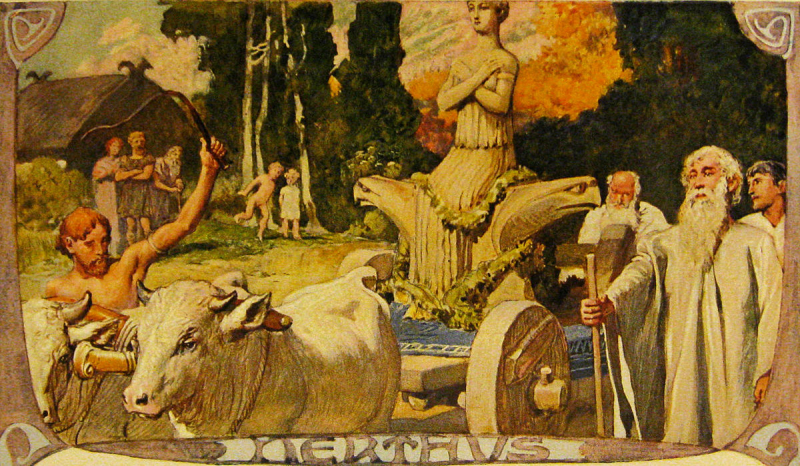
Photo: Wikipedia 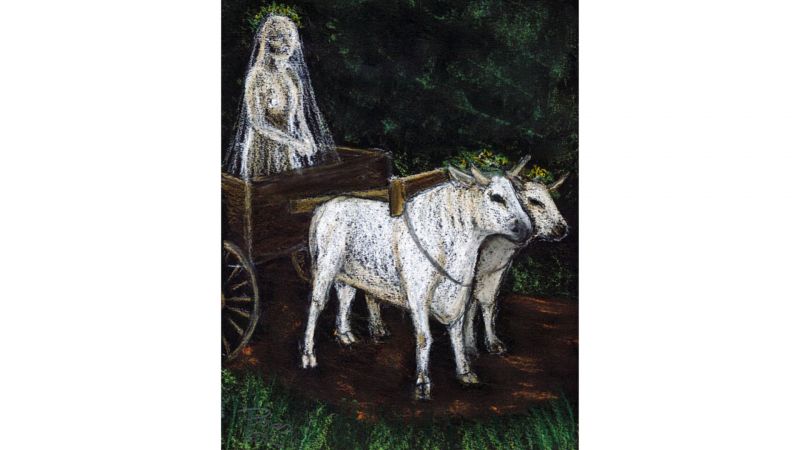
Photo: Boudicca's Bard -
In Norse mythology, Hel is a female character who is thought to rule the same-named underworld realm and receive the souls of the deceased. Both the Prose Edda and the Poetic Edda, which were both written in the 13th century and were gathered from earlier traditional sources, mention Hel. She is also mentioned in poems from the ninth and tenth century, respectively, that are included in the Heimskringla and Egils saga records. Hel may occur on several Migration Period bracteates, and a passage in the Latin work Gesta Danorum, published in the 12th century by Saxo Grammaticus, is usually thought to be a reference to Hel. Hel is also considered as one of the the most famous Norse goddesses.
Hel is referred to as the daughter of Loki in the Heimskringla, Prose Edda, and Poetic Edda. Hel is said to have been chosen by the deity Odin to be the ruler of a country with the same name that is situated in Niflheim, according to the Prose Edda book Gylfaginning. Her look is described as having a dark, dejected expression and being half blue and half flesh-colored in the same source. The Prose Edda describes Hel as the ruler of enormous palaces with numerous attendants in her subterranean realm and as playing a significant role in Baldr's attempted resurrection.
Scholarly theories about Hel's possible relationships to characters in the Old Norse Bartholomeus saga postola and the 11th-century Old English Gospel of Nicodemus have been put forth. They suggest that she may have been a goddess with possible Indo-European parallels in Bhavani, Kali, and Mahakali or that Hel may have only existed as a late personification of the place with the same name.
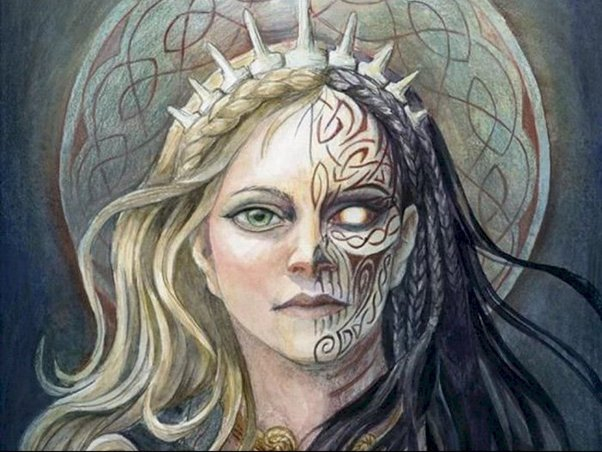
Photo: Quora 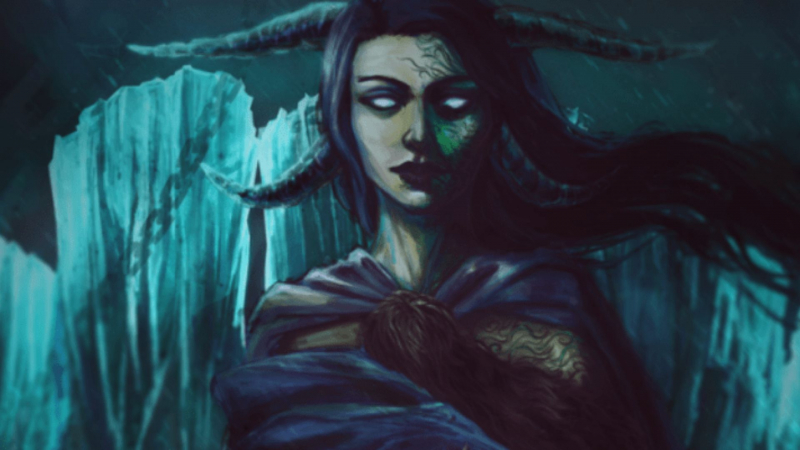
Photo: Norse and Viking Mythology -
The Poetic Edda's account of the conflict between the Aesir and Vanir clans made mention of the Vanir goddess Gullveig. She was skilled in seidr, a form of Norse magic that allowed one to see into the future and alter fate, and she possessed strong magical abilities. This Goddess is only referenced in the Poetic Edda, where it is said that she was burned three times during the conflict, spear-stabbed by the Aesir, and then reborn three times thanks to her magical powers. Due to their similar skills and biographies, some academics believe that she and Freyja are the same person under a different name.
The origin of the Old Norse name Gullveig is still a mystery. Although the second part, which can also be found in other personal names like Rannveig, Sölveig, or Thórveig, is a composite constructed with the Old Norse word for "gold" (gull), it is yet unknown. It might have been a code for "power, strength," "intoxicating wine," "woman," or perhaps "gold, gold thread." The term has been interpreted variously as "Gold-drink," "Gold-drunk," or "Gold-draught". Some people believe that Gullveig represents pure gold that has gone through numerous smelting processes. Semantically related is the name Heir, which in adjectival form means "bright, clear". Even if Gullveig's name changes to Heir, according to scholar Rudolf Simek, the connotation essentially stays the same.
Numerous academics, starting with Gabriel Turville-Petre, have proposed that Gullveig/Heir and Freyja are the same person. These researchers include Rudolf Simek and John Lindow. Since the Ynglinga Saga claims that Freyja brought seid to the Aesir first, Lindow argues that Gullveig might be Freyja and that she brought seid to the Aesir in the first place as a war plan or as the catalyst for the commencement of the conflict. Orchard goes on to say that Freyja, like Gullveig, is linked to gold and the seid school of magic.
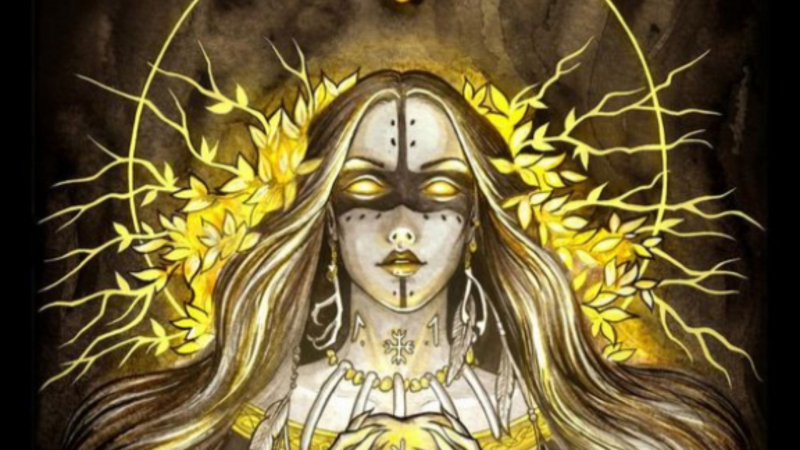
Photo: Berloga Workshop 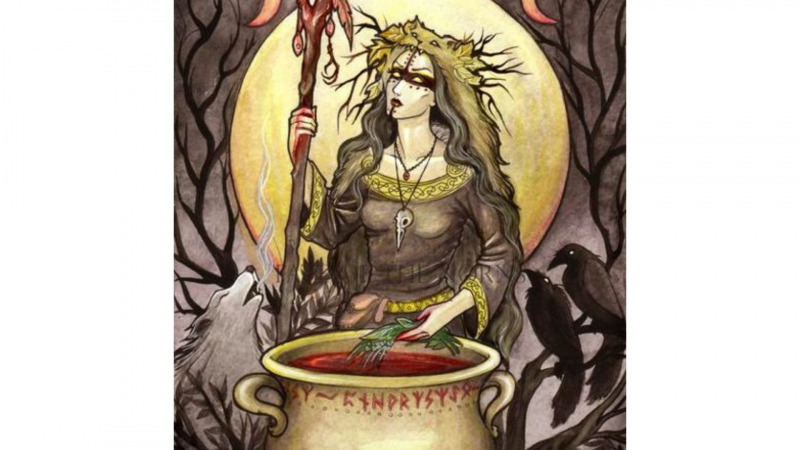
Photo: Berloga Workshop












